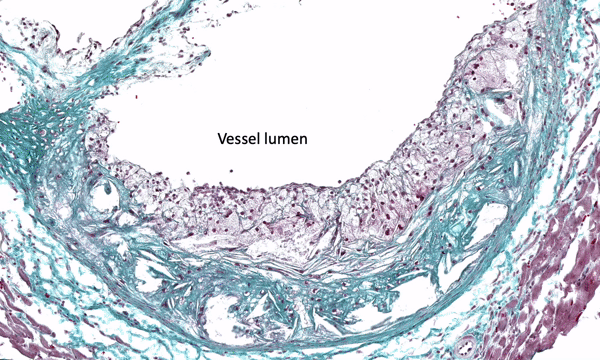Experimental Pathology of Atherosclerosis
The development of atherosclerosis obstructs blood flow and causes heart attack and ischemic stroke – some of the most important causes for loss of good life years in the world today.
Our research group investigates the mechanisms by which atherosclerosis forms. We are keenly interested in understanding how local smooth muscle cells of the artery wall transform their phenotype and build the fibrotic and calcified tissue of developing lesions. This is of particular importance because the type, abundance, and architecture of these tissue components are key determinants of the risk of an atherosclerotic lesion causing heart attack or stroke.
We have previously shown that a small group of smooth muscle cells undergo clonal growth in atherosclerosis and modulate to a spectrum of mesenchymal phenotypes ranging from smooth muscle cells over fibroblasts to osteochondrogenic cells (see video). The cells make these transitions at least partly by re-instating mechanisms involved in the development of the embryo. Current work focuses on understanding the function of these cells in human atherosclerosis and experimental models of atherosclerosis in gene-modified mice and minipigs.
Other work in the lab on the interactions of low-density lipoproteins with the arterial wall and on developing non-invasive imaging techniques to detect and quantify atherosclerotic plaques and their internal processes.
 Video showing how most of the cells in the atherosclerotic lesions are derived
Video showing how most of the cells in the atherosclerotic lesions are derived
from SMCs that modulates into cells with different morphology and function






